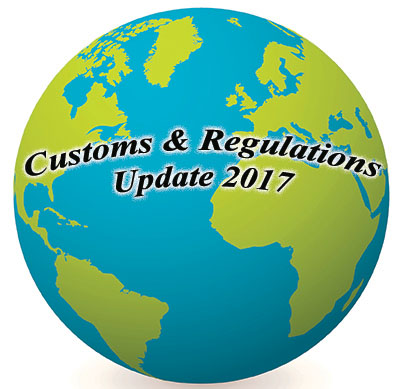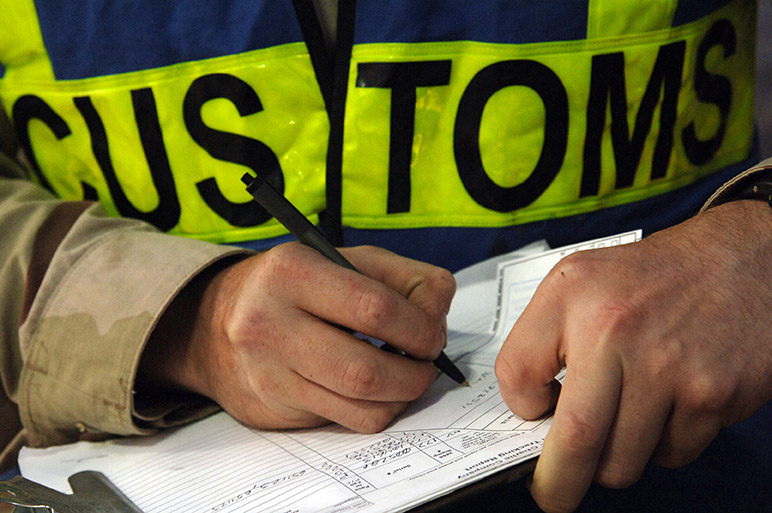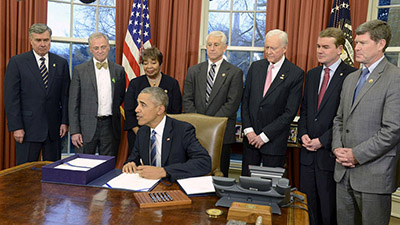Global Logistics 2017: Customs & Regulations Update: Micro-deals may prevail in world order
While logistics managers may expect to see fewer proposed mega-trade deals under the new administration, analysts say that there will still be new markets opening up for both U.S. imports and exports this year. Regulatory obstacles remain, however, and logistics managers will have to remain vigilant when it comes to evaluating adaptive strategies.

With the Trans-Pacific Partnership (TPP) now a distant memory, and prospects of the Transatlantic Trade and Investment Partnership (T-TIP) fading fast, shippers face new challenges when considering doing business in Asia and what remains of the EU.
Still, free trade agreements (FTAs) have proven to be one of the best ways to open up foreign markets to U.S. importers and exporters, as they continue to reduce barriers to entry, protect U.S. interests and enhance the rule of law in the FTA partner country.
According to the Office of the United States Trade Representative (USTR), the reduction of trade barriers and the creation of a more stable and transparent trading and investment environment make it easier and cheaper for U.S. companies to import and export their products and services to trading partner markets.
According to USTR analyst Lamont DeChance, 47% of U.S. goods went to FTA partner countries last year, while U.S. merchandise exports to the 20 FTA partners with agreements in force totaled $710 billion. “The United States also enjoyed a trade surplus in manufactured goods with our FTA partners totaling $12 billion in 2016,” he says.
However, with some policy analysts suggesting that the U.S. may be entering a new “cold war” with former trading partners, it might be best to remember the words President Reagan when he was dealing with belligerents in the 1980s: “trust but verify.”
To that end, the Broker Known Importer Program (BKIP) establishes a process for licensed, permitted U.S. customs brokers to identify importers in connection with their import related activities. Two years ago, The National Customs Brokers and Forwarders Association of America, Inc. (NCBFAA) has developed this Customs and Border Protection (CBP)-approved review list that the customs broker can use to identify eligible clients.

“The review list enables the customs broker to verify the importer’s identity and confirm the importer’s understanding of its compliance obligations in areas such as entry declarations, valuation and preference programs,” explains Alan Klestadt, NCBFAA’s customs counsel. “The review also addresses documentation and information requirements for customs clearance, record keeping and drawback.”
According to Klestadt, CBP wants to use the relationship between brokers and their importer customers to assist with its current mission. “The NCBFAA has developed this BKIP program to provide a way for CBP to benefit from this relationship,” he says “The thought behind this program is that there are a limited number of importers who will avail themselves of the Importer Self-Assessment (ISA) and Trusted Trader Programs.”
That being said, the customs brokerage community can augment existing relationships to become a “force multiplier” for CBP. According to the NCBFAA, customs brokers can leverage their relationships with the importing community to identify those importers who are reputable but may or may not qualify for or otherwise elect to participate in the ISA or Trusted Trader programs.
“This voluntary program, both for brokers and importers, is targeted for the shipper who is a regular importer into the United States,” says Klestadt. “The program is an opportunity to identify and address compliance issues with the importer prior to entry, alerts CBP to the fact that the broker has performed a review and provides the importer with some benefit for having engaged in the process.”
NCBFAA notes that the participating broker can use the CBP-approved template to conduct the review with an importer. The broker alerts CBP to the fact that this activity had occurred through an electronic flagging at the time of entry. CBP may offer benefits to the importer that might impact the importer’s risk profile in CBP’s targeting system. Additional benefits may also be extended to importers under this program.
Finally, the benefits extended to an importer under this program are unique to a specific importer-broker relationship—that is, each broker has to independently review the importer, and the broker may not rely upon a review performed by another broker.
“Brokers have to periodically re-confirm the importer’s compliance and, upon request, have to demonstrate to CBP that the review was conducted according to established guidelines,” says Edward Greenberg, NCBFAA’s transportation and general counsel. “This review is considered ‘customs business’ as it is an activity that relates to the preparation of documents/data that is transmitted to CBP in furtherance of the clearance process.”
Remain ever vigilant
Taking extreme precautions sounds like good advice to Karen Quintana, Customs compliance director for Yusen Logistics (Americas) Inc. Quintana notes that The Trade Facilitation and Trade Enforcement Act, which was signed into law by President Obama last year, has since renewed enforcement focus and given CBP “some teeth” in certain areas such as intellectual property rights, post-release, revenue, health and safety, agriculture, forced labor and most importantly antidumping and countervailing dumping evasion. 
“CBP will hammer in those areas in 2017 and will also remain on task with its ‘primary mission set’ that aims to protect against terrorism and enforcement and facilitation,” Quintana says. “This includes the enforcement of immigration laws, narcotics smuggling and agriculture enforcement.”
Quintana concludes that some challenges CBP will face are the larger vessels and aircraft bringing in bigger volumes. Last fiscal year, CBP processed 12 million containers and volumes are expected to rise.
Meanwhile, CBP will continue to strengthen its Centers of Excellence and Expertise (CEE) through January, 2017, say Customs officials. Full implementation of Automation Commercial Environment (ACE) is on track with outstanding deployments, post release capabilities, reconciliation, collection statements, drawback, and duty deferral expected to fold in by the end of the first quarter of this year.
Compliance as an advantage
For Beth Peterson, president of the global trade consultancy BPE, worldwide political upheaval has “profound implications” for today’s logistics manager. These include new trade agreements; tariffs on offshoring; currency manipulation; U.S. sanctions programs; and export controls.
“We’re advising shippers to adapt best practices and take an active role in quantifying the risks and the cost of mitigation strategies,” says Peterson. “If they automate and continuously measure high-risk operations, shippers can turn trade compliance into a strategic advantage.”
For Peterson, the most urgent concern U.S. exporters should address this year is related to initiatives mandated by the Bureau of Industry and Security (BIS). Managed by the U.S. Department of Commerce, the BIS mission is to advance U.S. national security, foreign policy, and economic objectives by ensuring an effective export control and treaty compliance system and promoting continued U.S. strategic technology leadership.
According to Peterson, the BIS conducts two types of outreach. “One is by the Office of Export Enforcement [OEE] and the other is a compliance outreach event by the Export Management Compliance Division, Office of Exporter Services [OExS]. “The OEE outreach events are driven by a variety of reasons. This Hot Topic will focus on the latter type of outreach event.”
BIS’ OExS has been doing these compliance outreach events since 2015. The intent is to discuss export compliance procedures generally and get an understanding of how different organizations handle export control compliance.
“This helps BIS OExS better appreciate the different approaches employed by companies and assists BIS in conducting compliance training for the public,” says Peterson. “It has also been extremely beneficial for BIS to learn firsthand what areas of the Export Administration Regulations are not well understood to help in their other OExS outreach seminars.”
As logistics managers prepare for the compliance outreach visit, the first thing they should do is run their ACE export report and look for any inconsistencies or errors, advises Peterson. “Shippers should research every anomaly, and if they do find errors, correct the Automated Export System Electronic Export Information filings as soon as possible. The next preparation task is to review their Export Management and Compliance Program and make sure it is accurate and up to date.”
Peterson also advises shippers to be prepared to share their “product matrix” and provide information on their classification process. “Shippers should be ready to share examples of training materials such as their new hire training, trade compliance training and job specific trade compliance training for engineering, product management and logistics,” she adds. “It’s even better to share your training logs to show that you provide training on a regular basis.”
Be not afraid
While caution and risk aversion should remain top of mind with U.S. importers and exporters, prominent industry analysts contend that the global commercial outlook remains fairly positive.
Michael Gravier, an associate professor of supply chain management at Bryant University, says that there’s been only a “temporary stall” in trade since the U.S. Presidential elections. However, some analysts contend that world trade has reached its limits, he says, noting that evidence from the International Monetary Fund indicates that whereas trade from 1985 to 2007 grew at twice the rate of GDP, it has barely kept pace over the past four years.
“But there’s another way to look at the data,” counters Gravier. “Trade grew more rapidly than GDP for many decades because of the initial boost from the implementation of the infrastructure, agreements, and other enabling elements of free trade since the Bretton Woods conference in 1944.”
According to Gravier, there is ample room for trade agreements in the future. Indeed, with 164 countries part of the General Agreement on Tariffs and Trade, most countries have already made at least some basic move to join the global economy. In the meantime, commodity prices have dropped; and once corrected for the change in pricing, volume for many commodities such as oil has actually gone up.
“Most importantly,” adds Gravier, “many have overlooked that there’s one form of global trade that continues to boom: the digital flows of data and information, this has been growing volume by 45 times since 2005, and may already contribute more value than the flows of goods.”
Gravier adds that data from a variety of sources indicate that these digital flows likely contribute to a “harder-to-measure,” but continued integration of the global economy.
“Companies that continuously innovate their organizations and invest in talent and knowledge management will be best positioned to benefit from the future world of integrated data flows,” adds Gravier. “This is especially true in an era that may see marked increase in protectionist policies. No amount of protectionism will stop the sharing of ideas and knowledge, making them good investments.”

Article Topics
Magazine Archive News & Resources
Latest in Materials Handling
The (Not So) Secret Weapons: How Key Cabinets and Asset Management Lockers Are Changing Supply Chain Operations MODEX C-Suite Interview with Harold Vanasse: The perfect blend of automation and sustainability Consultant and industry leader John M. Hill passes on at age 86 Registration open for Pack Expo International 2024 Walmart chooses Swisslog AS/RS and software for third milk processing facility NetLogistik partners with Vuzix subsidiary Moviynt to offer mobility solutions for warehouses Materials Handling Robotics: The new world of heterogeneous robotic integration More Materials HandlingAbout the Author
Subscribe to Materials Handling Magazine

Find out what the world's most innovative companies are doing to improve productivity in their plants and distribution centers.
Start your FREE subscription today.
April 2024 Modern Materials Handling

Latest Resources










